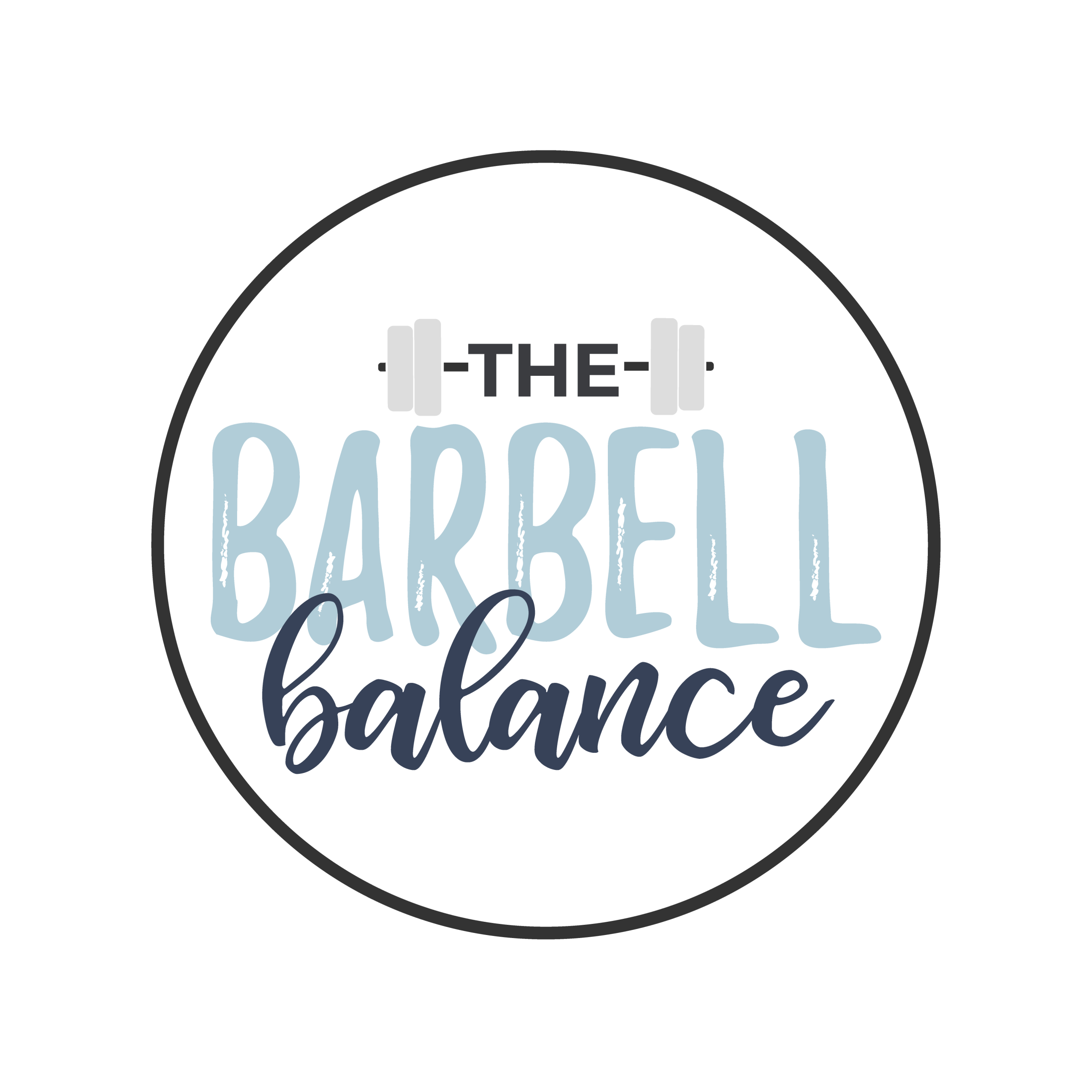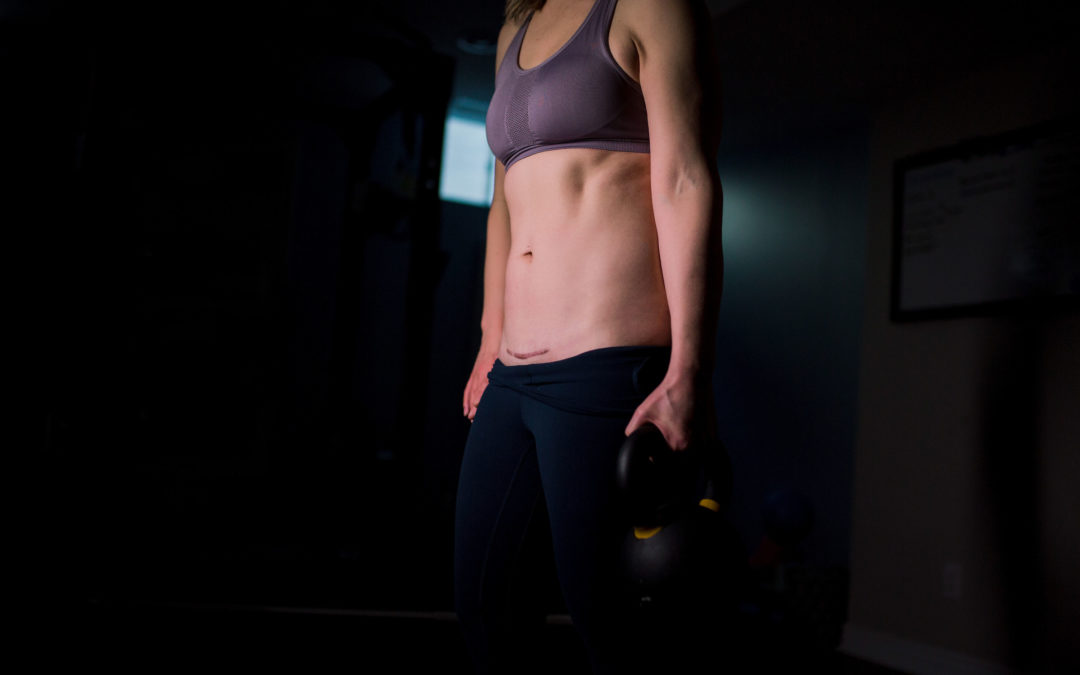Returning To Exercise Post C-Section Recovery.
After having two vaginal deliveries, one in the hospital and one at home, a c-section seemed unlikely in my third pregnancy.
At 30 weeks, my son was breech. There was a very brief conversation with my midwife, but it was more of a wait and see
My son flipped after my determination and obsessively scouring the Spinning Babies website. There was a big sigh of relief. I was in the clear.
At 36 weeks and four days, my baby was head down into my pelvis. I was cleared for a home birth.
The next day, my water broke. My midwife wanted to meet up at the hospital seeing my son wasn’t considered
I
This time, my midwife consulted with a Resident OB who wanted to do an ultrasound.
And there he was, breech. In the end, I had an unplanned c-section.
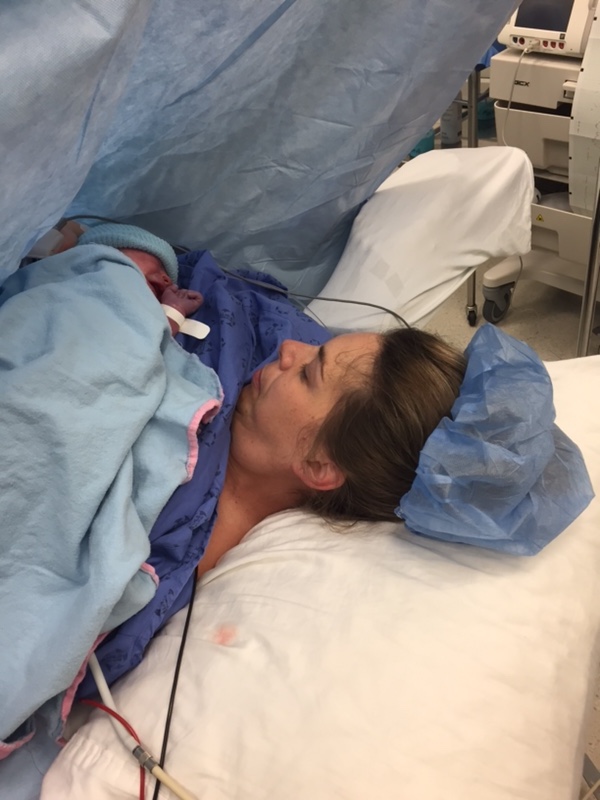
When I was ready to begin my weightlifting return, I took steps to make sure my body was “ready” Even with my training a Women’s Health Fitness Coach, this was new territory. Even after training c-section women for nearly a decade, it was surprising to experience this recovery first hand.
Learning how your pelvic floor functions during workouts and in every day life can be a big help in retraining your core and pelvic floor post-c-section. Training For Lady Parts, my complementary pelvic floor training mini-course lays it all out for you including whether or not kegels are right at this point.
Typically, you will go see your doctor at 6-weeks post and given the green light but this isn’t to say that you should rush back into high-intensity workouts.
Here’s What You Need To Know:
During a C-section, there is an incision made into your fat tissue and connective tissue to get to your abdominal muscles. These muscles are then separated–your bladder is moved out of the way to that your OB can access your uterus. Your baby is gently removed and your placenta removed shortly after.
This is a big deal both physically and emotionally.
Once the baby is born, your uterus is stitched, your bladder is put back in its place, and your connective tissue, ab muscles, and skin are stitched as well. From there, a scar will form on the layer of sutures as your body heals.
Now, these scars aren’t only the visible ones you see when you look at your tummy. A C-Section is invasive and complex and it needs 9-12 months of healing time. Some women may find they need more.
Scar massage is also a great way to help with the healing process. I still massage mine regularly.
Additionally, you may be surprised by the sensation in your abdomen. Your scar and the muscle surrounding the incision may feel numb and pulling or tugging for the first several months which may limit some of your movement. Don’t try and push through it. Scale the movement until you no longer have these sensations.
It’s
The impact happens because of the downward pressure of the baby. This can because stretching causing the connective tissue to become weak and
The expanding uterus puts pressure on other pelvic organs, including the bladder and rectum, and can disrupt their function.
In POPMAX, my online fitness coaching program for women who’ve recently given birth and want to manage their pelvic health as well as return to training at a high-intensity, you will learn how to connect with your core and pelvic floor. This is especially important for a c-section mama who needs to rebuild and restore her core after having a baby.
C-section scars can have an impact on pelvic nerve function, leading to symptoms like:
- Urethral burning
- The feeling of needing to pee all the time
- Pain in the clitoris and labia.
- SI pain or sciatica
- Painful intercourse
Your alignment changes during pregnancy and postpartum, for example, standing with the bum tilted under can affect your pelvic floor muscles, leaving them overactive and short. So check in on how you’re standing from time to time, making sure your ribs over hips, shoulders down and back, and don’t hide your bum. Share it with the world dang it! Just take a look at me below.
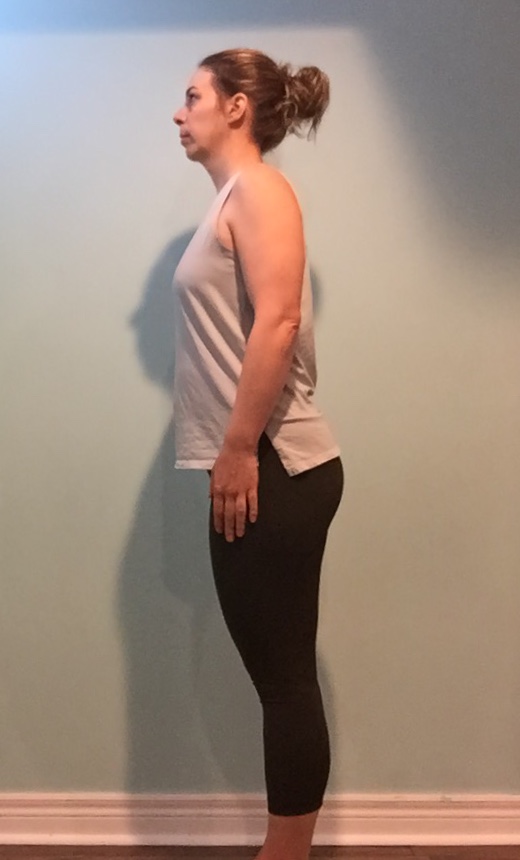
When returning to strength training after a C-section I recommend to consult both your doctor and a pelvic floor physiotherapist. They can make sure that the C-Section and your pelvic floor is healing properly and that there are no underlying issues.
You can start with your rehab early on. I started working on reconnecting my breathing to my deep core within the first 48 hours using the Core Breath. At the three weeks mark, I added in some light resistance training with by breathing like:
Begin with one to two times per week and don’t over exert yourself. 15- 20 minutes to start off with in addition to your postpartum rehab exercises given my your pelvic PT. As you adapt to the movements, you can add more intensity by increasing weight by 2-5%, increase the duration, or decrease rest periods.
Be sure to give your body enough time to rest between sessions. 24 to 48 hours is a good window to see if anything isn’t feeling right and to give your body enough time to adapt to your program. If you have any bleeding or pain (scar, pelvic, back) at all during or after exercise, decrease the intensity but lowering the weight (if you’ve added any), decrease duration, or increase rest periods.
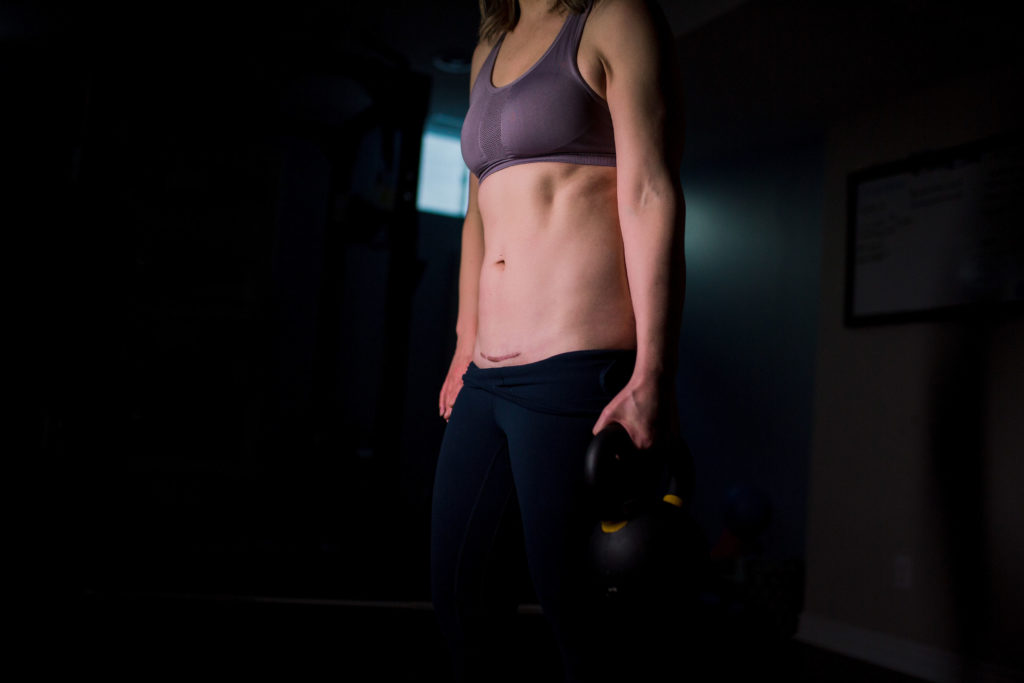
Be conservative with your weight training program especially in the beginning and avoid any high impact or high-intensity fitness program. Start with resistance bands, body weight, and light weights. Remember to focus on your breath and watch your form.
Exercises to avoid in the early postpartum (1-4 months, longer if needed):
- Crunches, sit-ups, leg raises, and front planks
- Running, jumping, step-ups
- Heavy overhead presses like push presses and thrusters
- Heavily weighted movements
- Anything that places direct downward pressure on the pelvic floor, like a barbell back squat or barbell front squat.
At 4 months postpartum, I was able to get into CrossFit, keeping my movements scaled for about 6-8 months depending on how my body felt. Some movements came faster than others. And some still need work like the Snatch. Oh, the Snatch and I have some weird thing going on. With a little more time, I’ll get there.
At 17 months postpartum, I’m the strongest I’ve ever been and continue to progress exceeding my expectations. Giving myself space to recover and working with an incredible pelvic PT and my training as a Pregnancy And Postpartum Athleticism Coach, Postnatal Fitness Specialist and Certified Pre-&Postnatal Coach, I was able to return to high-impact training without any complications.
If it doesn’t come right away, it’s ok to feel discouraged. Just remember, your body is healing from a major body (and life) event and this is temporary.
If you are ready to go from postpartum rehab to high impact strength and conditioning POPMAX is your next step. With workouts you can do at home or in the gym, giving you endless options in your training. If you want a program that supports your pelvic health, postpartum healing, and your strength and conditioning goals, click here.
Ready to maximize your fitness planning and feel confident in your lady parts? Download your free copy of my Handy Lady Parts Handbook: 5 Considerations All Women Need For Fitness And Their Vagina. You will learn to prevent and manage pelvic floor dysfunctions, and improve fitness power in both pregnancy and postpartum.
